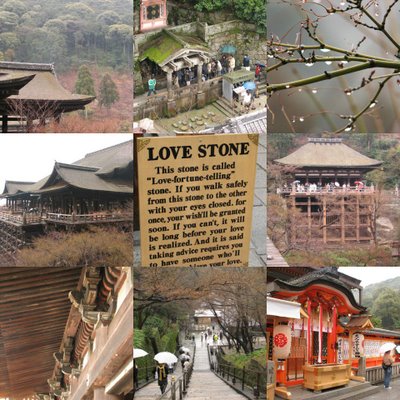Day 3: Toyohashi-Hakone-Mt. Fuji-Lake Kawaguchi
A little introduction about bullet train, it started in year 1964. The bullet in Japan can go up to 280-300km/h (at full speed) and it will only take about 2 hours 45 minutes to get from Osaka to Tokyo, which is about 800km.
However, we only took the train for one stop and that cost us 2,000 YEN.
After more bus ride, we arrive at the Hakone’s National Park – Lake Ashi. We then took a 30 minutes boat ride in Lake Ashi (the depth of the lake is 40m at the deepest point). The view around the lake was fantastic but I was chilled to the bone from the blowing wind.
After the boat ride, the tour went to the Owakudani Valley - Black Egg Valley. They called it the Black Egg Valley because they really do have black eggs there. The mountains at Owakudani Valley were once active volcanoes. Now, the valley have hot spring and sulfurous acid gas coming out from everywhere and sell black eggs there !
Mt. Fuji
Fuji-san stands at 3,776 m tall and last erupted in 1704.
The weather wasn’t fantastic when we were on our way to Fuji-san so I couldn’t see if from far away. The bus got us up to the 4th Station (2,020m above sea level) on Mt. Fuji and the view of the summit covered with snow was magnificent !
Great feeling holding snow & looking at the crater of Mt. Fuji for the first time in my life ! Simply superb !
Sleep over in a ryokan (guest house - budget hotel)
The tour agency managed to book the whole hotel just for our group and the hotel is next to Lake Kawaguchi. And in the hotel, they have onsen (hot spring) too !
This stay was probably the most culturally-satisfying throughout the whole trip. We sleep on tatami (woven straw mat) with the Japanese futon (mattress), bathe butt-naked at the onsen (too bad this one separates the Male & Female bath), yukata dinner party and sake drinking game with no rules set. Even their bathroom (in the room) is the traditional type, where you sit on a stool and bath with a small towel.
The correct way to dress in a yukata.
It is very important to make sure you fold it Right first followed by Left. The other way round is for the deceased and you don’t want to walk around in the hotel that way.
I think the temperature must have been around 4-5°C that night, the heat of sake wore off, it freezed the hell out. And I slept with the window open and the heater off. Smart.
















